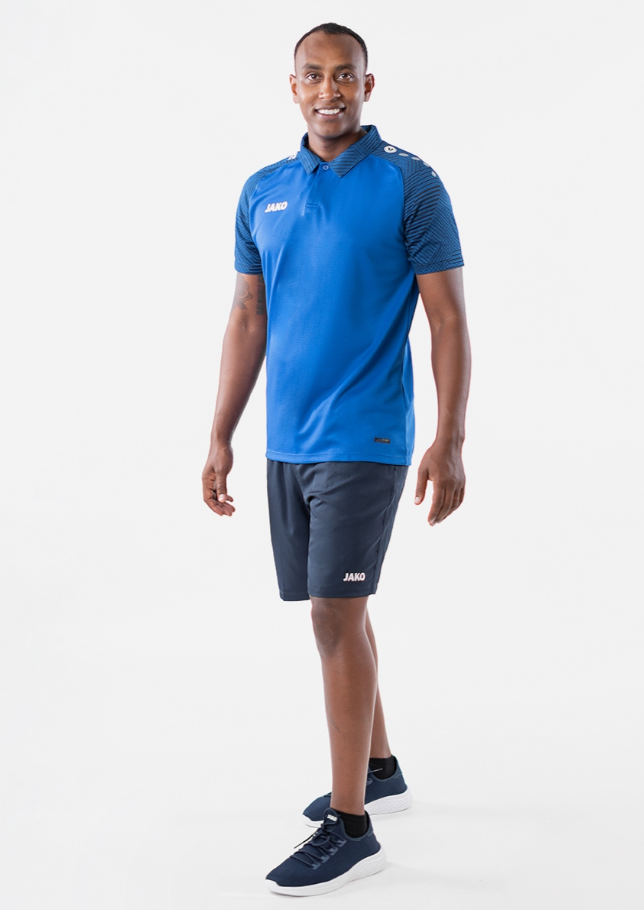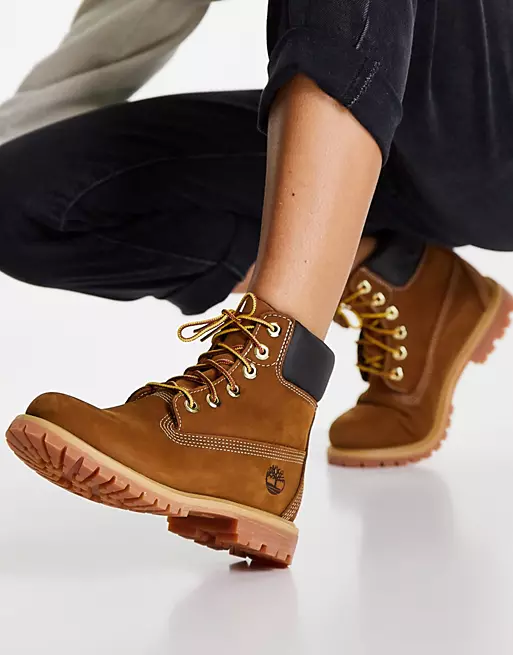Fashion and technology have always been intertwined, from the invention of the sewing machine to the introduction of e-commerce. However, in recent years, technology has revolutionized the fashion industry in ways that were once unimaginable. The use of artificial intelligence, 3D printing, and virtual reality are just a few examples of how technology is transforming fashion.
In this blog, we will explore the role of technology in fashion and how it is changing the industry. From supply chain management to customer experience, we will highlight the impact of technology and the exciting innovations that are yet to come.
Join us as we delve into the exciting world of tech and fashion!
The Impact of Technology on Design Process in Fashion Industry
The fashion industry has been transformed by technology in many ways, from the design process to the runway. The impact of technology on the design process is particularly significant. With the use of 3D printing, designers can create prototypes at a faster pace and experiment with different shapes and fabrics.
Digital renderings allow designers to see what their designs will look like before producing physical samples. Additionally, software programs such as Adobe Illustrator and Photoshop enable designers to create intricate patterns and designs that can be easily transmitted to manufacturers.
All in all, technology has revolutionized the design process in ways that were previously unimaginable, allowing designers to bring their creative visions to life efficiently and effectively.

3D Printing in Fashion Design
One of the most exciting innovations in the fashion industry is the use of 3D printing in the design process. With 3D printing, designers can create intricate and complex shapes and designs that were previously impossible to achieve.
This technology allows designers to create prototypes quickly, accelerating the design process. It also offers greater flexibility in terms of experimenting with different materials and shapes, which can be easily adjusted on a computer and printed on demand. The adoption of 3D printing technology in fashion design has streamlined the production process, making it faster, more cost-effective, and reducing waste.
This technology has brought a new level of creativity and freedom to fashion design, allowing designers to push the boundaries of what’s possible.
ComputerAided Design Tools
Technology has played a major role in transforming fashion design into a much faster and precise process than ever before. The use of Computer-aided design (CAD) tools has enabled designers to create intricate and complex designs with stunning effects.
CAD enables designers to easily create, modify, and share digital designs and patterns with a high level of accuracy and speed. The use of CAD tools has revolutionized the fashion industry, especially in clothing production, enabling designers to create detailed designs and produce them quickly and efficiently. This technology has also made it easier for designers to collaborate with clients and manufacturers, resulting in better communication and an improved design process.
Virtual Reality and Augmented Reality
Computer-Aided Design Tools
Technology has played a significant role in transforming fashion design into a much faster and more precise process than ever before. One of the most influential technologies in fashion is Computer-Aided Design (CAD) tools.These tools have enabled designers to create intricate and complex designs with stunning effects. The use of CAD tools has revolutionized the fashion industry, particularly in clothing production, as designers can create detailed designs and produce them quickly and efficiently. CAD tools enable designers to easily create, modify, and share digital designs and patterns with a high level of accuracy and speed.
This technology has made it easier for designers to collaborate with clients and manufacturers, resulting in better communication and improved design processes. Technology has elevated the quality and speed of design processes, allowing designers to focus more on creativity and innovation.
Virtual Reality and Augmented Reality
Virtual Reality (VR) and Augmented Reality (AR) have now become a reality for the fashion industry.Fashion designers can now create lifelike and interactive 3D models of their designs using VR technology. This enables designers to present their designs to clients and manufacturers in a way that is both engaging and immersive.
AR technology has also been used by fashion brands to enhance the shopping experience. AR apps allow customers to see how a piece of clothing would look on them virtually, without having to try it on physically.
This technology has revolutionized how we shop for clothes, making it more convenient and personalized. In conclusion, technology has brought about significant changes to the fashion industry, making it faster, more accurate, and more creative. CAD tools and VR/AR technology have opened up new avenues for designers and manufacturers and have made fashion more accessible and convenient for consumers.
The future of fashion looks bright with the continued integration of technology and design.
The Advancements in Textile Technology Related to Fashion
Technology has revolutionized the fashion industry in many ways, including the design process, production, and customer experience. The use of Computer-Aided Design (CAD) tools has made fashion design more detailed, precise, and efficient.
This technology has improved the communication and collaboration between designers, clients, and manufacturers, making it easier to create stunning designs. Virtual Reality (VR) and Augmented Reality (AR) have also become powerful tools in the fashion industry, allowing designers to create 3D models of their designs and enhancing the customer’s shopping experience. AR apps enable customers to see how clothes look on them virtually, making it more convenient and personalized.
The future of fashion looks bright as technology continues to merge with design, resulting in innovative and exciting fashion experiences for us all.

Smart Fabrics and Wearables
Another exciting development in textile technology is the emergence of smart fabrics and wearables. These fabrics come embedded with sensors that can monitor various aspects of the wearer’s body, such as heart rate, breathing, and even emotions.
These textiles react to the wearer’s needs, such as changing color to indicate an increase in heart rate, or regulating body temperature.
Wearables, on the other hand, refer to clothing or accessories that have technology integrated into them. Fitness trackers, smartwatches, and smart glasses are some examples of wearables that have become commonplace in our daily lives.
In fashion, wearables have opened up new possibilities, such as integrating entertainment, communication, and even payment systems into clothing.
Overall, technology’s influence on fashion has been significant, from the design process to the final product. As we continue to innovate, we can expect technology to play a more prominent role in fashion, enhancing our clothes’ functionality and experiences.
Sustainable and EcoFriendly Materials and Manufacturing
Technology and fashion have come together to create a new era of sustainable and eco-friendly materials and manufacturing practices. In recent years, designers and manufacturers have been making strides towards reducing their carbon footprint and empowering environmentally-conscious consumers.
Technology has been instrumental in this shift, with the development of new fabrics made from recycled materials or using innovative production processes that require less water and energy.
This has resulted in a range of new eco-fashion products, including clothing made from organic cotton, recycled polyester, and even mushroom leather. These eco-friendly materials not only reduce the environmental impact of the fashion industry but also offer consumers more sustainable and ethical choices.
Nanotechnology in Textile Production
One of the most exciting ways technology is revolutionizing the fashion industry is through the use of nanotechnology in textile production. Nanotechnology refers to the manipulation of matter at the nanoscale level, which allows for the creation of fabrics with cutting-edge properties.
For example, nanotechnology can be used to create textiles that are water-resistant, antimicrobial, and even self-cleaning.
This means that we could soon be wearing clothes that repel stains and bacteria, reducing the need for frequent washing and extending the lifespan of our garments.
Furthermore, nanotechnology can also be used to create textiles that are breathable and moisture-wicking, making them more comfortable and functional for active lifestyles.
Overall, the incorporation of nanotechnology in textile production has the potential to revolutionize the way we think about clothing, offering us new levels of comfort, performance, and durability.
The Role of Technology in Fashion Retail
In addition to transforming textile production, technology is also playing a significant role in fashion retail. With the rise of e-commerce, virtual try-on technology has become increasingly popular.
This technology allows shoppers to see how clothing looks on them without ever having to set foot in a physical store.
Augmented reality (AR) is another technology that is changing the face of fashion retail. AR allows shoppers to try on clothes virtually, see how different colors and styles look on them, and even receive personalized styling recommendations.
Advancements in artificial intelligence (AI) and data analytics are also revolutionizing the way retailers operate. Retailers can use AI to analyze customer data and create personalized shopping experiences, from product recommendations to targeted advertising.
Overall, the integration of technology in fashion retail has the potential to create a more personalized, convenient, and efficient shopping experience for consumers while also providing valuable insights for retailers.

ECommerce and Online Shopping
Gone are the days when consumers had to go to physical stores to buy clothes. With the advent of e-commerce, shoppers can easily browse and buy clothes online from the comfort of their own homes. To make online shopping even more convenient, retailers are using technology to create a better online experience.
For example, some retailers are using chatbots to assist customers with their queries, while others are using 3D imaging to create a more realistic representation of their products. The use of technology has also made it possible for retailers to offer a wider selection of products, and to make them available at any time of the day or night.
Overall, technology has revolutionized the way we shop for fashion, making it easier and more accessible than ever before.
Artificial Intelligence in Fashion Retail
Technology has transformed the fashion industry in more ways than just online shopping. With the rise of artificial intelligence, retailers are now able to gather a vast amount of customer data, allowing them to predict fashion trends and preferences. AI-powered recommendation engines can offer customers personalized clothing options based on their browsing history and purchase behavior.
A number of fashion brands are also using machine learning algorithms to optimize their supply chain and reduce waste. The use of AI in fashion retail not only enhances the customer experience but also helps retailers create a more sustainable and efficient business model.
As AI technology continues to evolve, we can expect even more exciting innovations in the fashion industry.
Personalized Shopping Experience
One of the most impactful ways that technology has revolutionized fashion is by providing a personalized shopping experience. Online retailers use data analytics and machine learning algorithms to personalize each shopper’s experience, offering recommendations and curated product lists based on their browsing history and demographic. Even brick-and-mortar stores have started to incorporate smart mirrors and interactive displays to create an interactive shopping experience, enabling customers to virtually try on clothes and experiment with different styles in real-time.
With personalized shopping experiences, customers are more satisfied and engaged, leading to higher sales and revenue for fashion retailers.
The Influence of Social Media and Digital Marketing on Fashion Industry
The fashion industry is no stranger to the world of social media and digital marketing. In fact, with the rise of social media platforms, fashion brands have been able to reach a wider audience and connect with their customers on a more personal level. Brands can now create buzz around product launches or events, engage in influencer marketing campaigns, and share behind-the-scenes content of their design processes.
Digital marketing has also made it easier for consumers to discover new brands and products, leading to increased competition among fashion retailers. As a result, fashion brands are investing more in their digital marketing strategies to stand out from the crowd and capture the attention of consumers.
Overall, the influence of social media and digital marketing on the fashion industry has been significant, and it will only continue to shape the industry in the future.

Instagram and Influencer Culture
One platform that has had a major impact on the fashion industry is Instagram. With over one billion active users, Instagram has become a hub for fashion influencers and bloggers. Brands often collaborate with these influencers to promote their products, as they have a loyal and engaged following that trusts their opinions and style choices.
Instagram has also changed the way we consume fashion content. Instead of relying solely on magazines and fashion shows, consumers now turn to influencers and bloggers for inspiration and style tips.
This has led to a shift in power from traditional fashion leaders to everyday individuals who have built a following based on their style and personality.
Instagram has also become a source of inspiration for designers and fashion brands.
They can easily research trends and see what their competitors are doing, making it easier to stay relevant and innovative in the fast-paced fashion industry.
E-commerce and Online Shopping Experiences
The rise of e-commerce and online shopping has also impacted the fashion industry. Consumers can now shop from anywhere in the world, and fashion brands can reach a global audience with ease.
In addition, brands can now offer personalized shopping experiences through the use of data and technology, making it easier for customers to find what they are looking for.
E-commerce has also changed the way we interact with fashion.
Instead of traditional shopping experiences, brands are now turning to immersive and interactive experiences that allow customers to explore products in a more engaging way. For example, augmented and virtual reality technologies are being used to create virtual try-on experiences and 360-degree product views.
Overall, technology has revolutionized the way we consume, create, and interact with fashion.
From social media to e-commerce and beyond, it has transformed the industry and will continue to shape its future.
Virtual Fashion Shows and Runways
One of the biggest changes brought about by technology in the fashion industry is the move towards virtual fashion shows and runways. With the COVID-19 pandemic making large gatherings impossible, many fashion brands have turned to technology to showcase their latest collections.
Virtual shows offer a range of benefits. For one, they allow for greater accessibility and inclusivity – anyone with an internet connection can now attend a fashion show. Additionally, virtual shows allow designers to experiment with new formats and presentations, such as incorporating 3D animations, models avatars, and immersive technology.
Moreover, virtual shows can be more sustainable than traditional fashion shows, cutting down on waste and carbon emissions associated with travel and production.
While virtual shows can never fully replace the energy and excitement of a live event, they have certainly become an important new tool in the fashion industry’s arsenal.
DataDriven Marketing Strategies
Virtual Fashion Shows and RunwaysTechnology is transforming the way we view and experience fashion. The COVID-19 pandemic has accelerated the shift towards virtual fashion shows and runways, providing designers with a new platform to showcase their collections. Virtual shows are more inclusive and accessible, allowing anyone with an internet connection to attend.
Moreover, they offer endless possibilities for experimenting with new formats and presentations, such as incorporating 3D animations, models avatars, and immersive technology. Moreover, virtual shows can be more sustainable than traditional fashion shows, cutting down on waste and carbon emissions associated with travel and production.
By embracing technology, designers can create cutting-edge presentations that meet the needs of both consumers and the planet. Data-Driven Marketing StrategiesAnother way technology is revolutionizing the fashion industry is through data-driven marketing strategies. With the rise of social media and e-commerce, companies have access to vast amounts of customer data, which can be leveraged to create highly personalized marketing campaigns.
Data insights can help companies understand their customers’ preferences, needs, and behaviors, enabling them to design targeted marketing campaigns that better resonate with consumers. By analyzing social media interactions and online purchasing behavior, companies can better understand what motivates their customers’ buying decisions and tailor their marketing accordingly.
The use of data-driven marketing strategies not only improves customer engagement and loyalty but can also increase sales. By providing a more personalized shopping experience, companies can enhance the perceived value of their products and services, encouraging consumers to make repeat purchases.
In conclusion, technology is transforming the fashion industry in new and exciting ways. Virtual fashion shows offer designers boundless opportunities to showcase their collections while also providing greater accessibility and inclusivity. Data-driven marketing strategies allow companies to better understand their customers, which can lead to more targeted and personalized marketing campaigns.
By embracing technology, the fashion industry can create a more sustainable, innovative and customer-centric future.
The Future of Fashion and Technology Integration
One of the biggest impacts of technology on the fashion industry is the shift towards data-driven marketing strategies. With social media and e-commerce platforms, fashion companies can now access vast amounts of customer data, which can help them to create highly personalized marketing campaigns. By analyzing customer behavior and preferences, companies can tailor their marketing strategies to better resonate with consumers, leading to increased sales and customer loyalty.
In addition to data-driven marketing, technology is also transforming the way fashion shows and runways are experienced. Virtual fashion shows and runways are becoming increasingly popular, providing designers with a new platform to showcase their collections.
These shows are more inclusive and accessible, and they also offer endless possibilities for experimenting with new formats and presentations, such as 3D animations and immersive technology. As technology continues to evolve and shape the future of fashion, we can expect to see even more innovative and sustainable practices being implemented in the industry. From using 3D printing to create bespoke clothing, to incorporating biodegradable materials in production, the possibilities are endless.
Overall, the integration of technology in fashion is revolutionizing the industry and providing new ways for designers and companies to create more sustainable and customer-centric fashion.

Wearable Technology for Health and Safety
As technology continues to innovate, wearable technology is fast becoming a popular trend in the fashion industry. Wearable devices like fitness trackers, smartwatches, and health monitors are not only fashionable but also functional, providing users with real-time data on health and fitness.
These devices are helping people stay healthy and active by providing insights into their physical performance, such as heart rate, steps taken, and calories burned. Additionally, wearable technology is also being used to improve safety in the fashion industry. For example, smart textiles with built-in sensors are being developed to monitor body temperature, heart rate, and other vital signs, which can alert wearers and employers in case of any health emergency.
This integration of fashion and technology has opened up new avenues for innovation and creativity, showcasing the potential of fashion tech to help enhance our daily lives.
Robotics and Automation in Fashion Manufacturing
Wearable technology is just one aspect of how technology is revolutionizing the fashion industry. Robotics and automation are also playing a big role, especially in fashion manufacturing. Robotics and automation have made it possible for fashion manufacturers to produce clothing at a faster rate while reducing costs and improving the quality of the finished product.
Robots are being used to cut fabrics, sew fabrics together, and even fold finished garments. This automation is also helping to ensure that garments are made to precise specifications, reducing errors in the manufacturing process.
As a result, fashion brands can produce more sustainable and ethical clothing that is of higher quality and consistency.
With the use of robotics and automation, fashion manufacturers can now produce and deliver custom clothing orders at an unprecedented speed. This has also opened up new possibilities for mass customization and made-to-order clothing, further demonstrating how technology is driving change in the fashion industry.
The Rise of Fast Fashion and Its Implications on Technology
The fast fashion industry has grown rapidly over the past few decades, with retailers delivering new collections to customers every few weeks. This trend has put pressure on manufacturers to produce clothing at a much faster rate. Technology has been a major enabler of this shift towards fast fashion, making it possible for retailers to respond quickly to changing trends and consumer demand.
However, the rise of fast fashion has also raised concerns about the environmental impact of clothing production and the treatment of workers in low-wage countries. As a result, some fashion brands are turning to technology to make their production processes more sustainable and ethical.
For instance, some brands are using 3D printing technology to create clothing from recycled fabrics, while others are investing in smart textiles that can monitor and adjust to changes in temperature and humidity. These innovations are not only helping to reduce waste and improve working conditions, but they are also creating new opportunities for designers and manufacturers to experiment with new materials and construction techniques.
Technology has undoubtedly revolutionized the fashion industry by improving the design process, manufacturing, and customer experience. Advancements such as 3D printing, smart fabrics, virtual and augmented reality, and e-commerce platforms have all played a significant role in shaping the industry.
The implementation of these technological advancements has made fashion more efficient, sustainable, and accessible to a broader audience.










